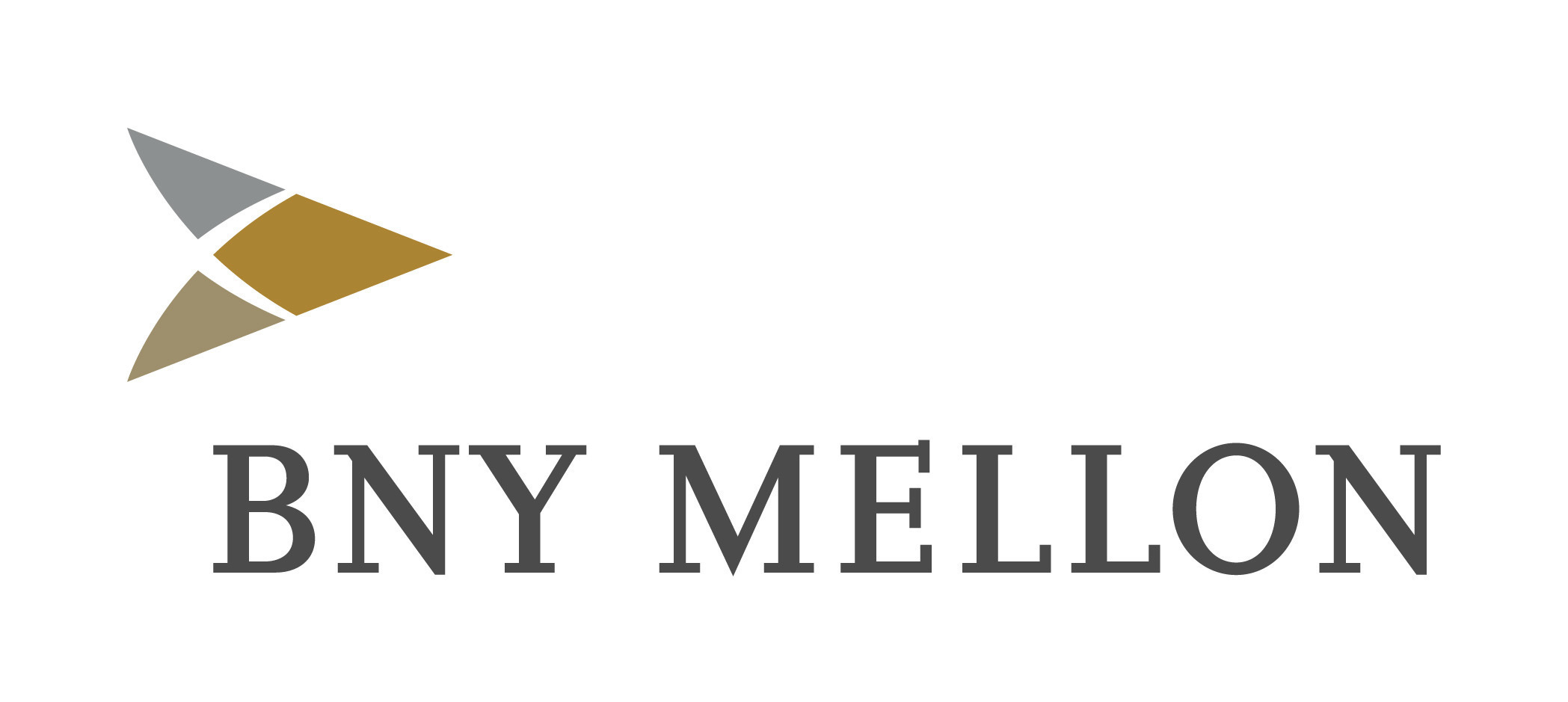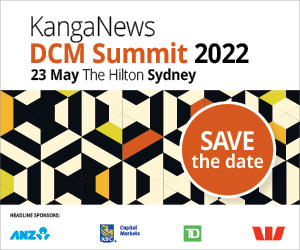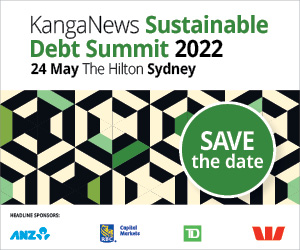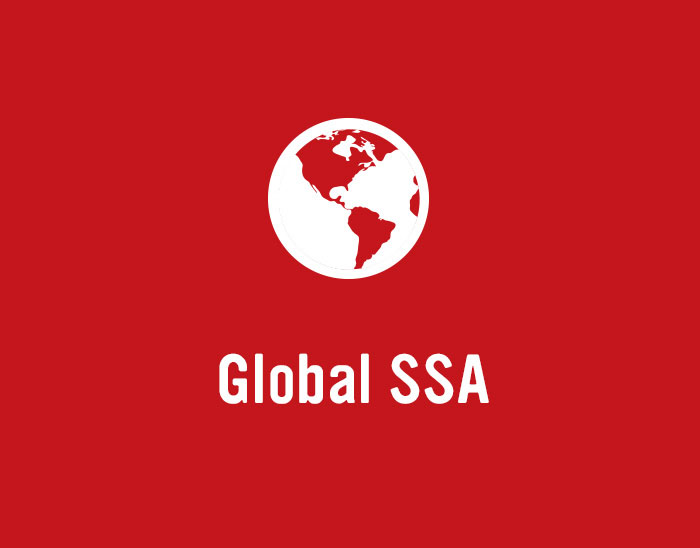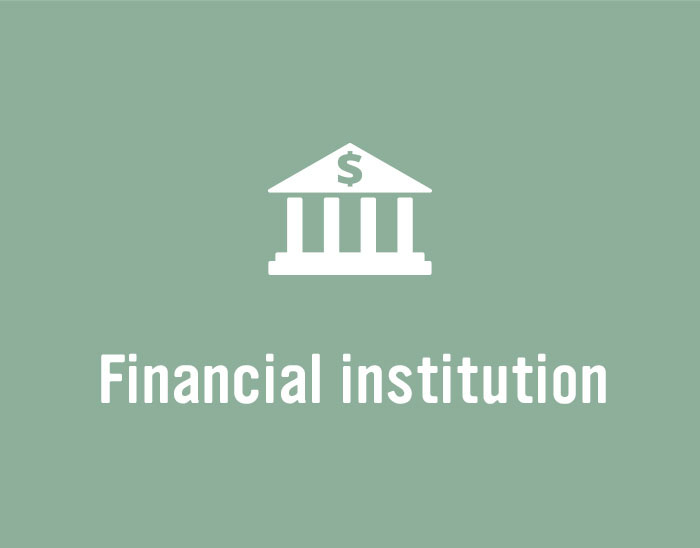
Roundtable discussion: Women in Securitisation
The Australian securitisation industry has been at the front line of market evolution, from its position at the eye of the financial-crisis storm to the proactive role played by the Australian Securitisation Forum (ASF)’s Women in Securitisation (WIS) subcommittee.
BNY Mellon and KangaNews gathered leading structured-finance market participants to discuss how years of experience at the leading edge will be used to deliver the next phase of evolution. Topics of conversation include developing the government intervention that has provided crucial support to the market in 2020, issuer and investor response to the crisis and getting back on track with industry initiatives.
MARKETS AND DEAL PROCESS
Zaunmayr The Australian securitisation market has bounced back quickly from the first phase of the COVID-19 crisis so far, greatly supported at least initially by intervention from the Australian Office of Financial Management (AOFM). How does deal execution compare with before the crisis?
GAAL The market has returned sooner than expected. To date, this has been mainly for the nonbank sector, which does not have the benefit of alternative government support mechanisms to access funding.
We find engagement with investors has a very clear COVID-19 focus. They are keen to know what issuers are doing to manage hardship and what the percentage of COVID-19 affected borrowers is in each pool.
From a transaction-management perspective, there is probably an extra element of correspondence with investors prior to public mandates being released. This was particularly the case in initial transactions as investors began to understand the implications of COVID-19 on asset portfolios.
This has extended the deal timetable somewhat and has also led to an expansion of material needed, such as amendments to investor reports and presentations to cover points investors want to understand. These include loan servicing, what happens when borrowers complete their COVID-19 hardship arrangement period and how arrears will be reported going forward.
This will evolve. COVID-19 is obviously still present and we are all very aware of what is happening in Victoria. This could have wide implications for how deals look going forward. But it is clear that engagement between issuers and investors on what is being reported needs to continue to be aligned.
LAWLER The deal timeline is not necessarily longer but different things in the usual process need to happen earlier – particularly investor engagement. Investors want more time to think through how COVID-19 is affecting pools and how we are managing it.
I think investors are starting to be comfortable with how issuers’ processes are working. Issuers have done a good job communicating a consistent message, that we are managing the crisis prudently and as well as could be expected.
We care for our customers and are being responsible in how we are cutting back credit to originate loans that make sense in the current environment.
NUNEZ It is an interesting time for us as investors. The crisis had a significant impact on securitisation and also on how we manage our portfolios.
We experienced a huge amount of volatility in the first few weeks of the crisis. From our perspective, it was very much about understanding the value of what we held. A number of deals were put on hold as market participants stood on the sidelines waiting for the first to price after this period of volatility.
Our immediate concerns were about note performance. We invest in mezzanine notes in many public transactions and warehouses as well. What was occurring, how it was being reflected in arrears, what was being newly originated in warehouses and what quality of assets were going into new transactions were the considerations.
There was a lot of engagement with issuers to determine the asset quality included in deal structures and how they would perform. Once we had clarity around this, and saw the level of support from the AOFM, we gained a better idea of what we would be comfortable to purchase.
We are still cautious and mindful that a lot of the support that has been put in place will come off in time, so we are being selective. But what the AOFM has done has been very supportive. It has been a positive recovery.
"I think we have all been dragged quickly into the 21st century by COVID-19. The flexibility that has been enabled by the embracing of technology in the industry has added to the smooth running of transactions."
Zaunmayr How does the Australian environment compare with other securitisation markets around the world? Has the rebound we have witnessed locally been as noticeable elsewhere?
COEROLI In comparison to other markets where we are active, such as Europe and the US, the Australian market recovery has been quite impressive. This is largely due to the flexibility and intervention of the AOFM.
The European primary market is still very quiet and issuers have been focused on securing their warehouse funding. There is some activity in the US, but volume is down. In China, where the crisis first started, we have seen some recovery in the past few months. It is not quite back to normal but it has stabilised.
It is interesting to see the Australian market cementing a healthy volume of public deal flow compared with these other markets. There have been large benchmark deals and some of them have been achieved with little or no support from the AOFM.
LAWLER The AOFM support in Australia is unique and is one of the main reasons why the market is so healthy. The AOFM has created a level playing field that allows transactions to happen.
Rather than simply dipping cash into primary issuance, the AOFM has deployed a multipronged approach including support for the secondary market where, in the early days of the crisis, there was no price making. This allowed investors to see what their paper was worth in the secondary market so they could be confident to bid in primary.
It then became a matter of access to cash for investors, who were managing uncertainty around redemptions. By facilitating switches, the AOFM again facilitated investor participation in primary markets.
Finally, the forbearance special purpose vehicle (FSPV), which has been pulled together by the AOFM and the ASF, has allowed the investor community, to a degree, to put the COVID-19 effect on individual transactions aside and instead focus on the credit an issuer has provided.
I have found investors very open to transactions because this support is available. Australia stands out around the world for its success in keeping the market going.
GOUMENIS The AOFM’s role in supporting warehouses is also quite unique. Negotiating intercreditor terms where the AOFM has gone into warehouse structures as a mezzanine provider has been very helpful in that it sets a bar for what the AOFM expects minimum requirements for a mezzanine investor to be.
Previously, mezzanine investors had to negotiate this position and the outcome depended on their bargaining power within a transaction and on who the senior participant was.
Zaunmayr The trustee and documentation parts of a deal process are typically in the background during a transaction but are nonetheless integral. In what ways have these changed or evolved in the last few months?
O’SULLIVAN From a documentation perspective, we are typically seeing an increase in the number of consent solicitations we are being asked to put to investors. These cover things like general deal amendments, looking at stop-origination events and general disclosure obligations as a result of COVID-19. Timing has been an issue as the consent process is often urgent and coordinating parties including clearing systems can take time.
The value of diversity
The Australian Securitisation Forum (ASF)’s Women in Securitisation (WIS) subcommittee has been an advocate of industry diversity for many years. Its value has never been more apparent.
GAAL Like all subgroups at the ASF, there is a focus on engaging with members so the current inability to meet face-to-face makes it more challenging. We are looking at initiatives to allow us to engage members virtually, for mentoring online, public speaking for younger members and some more casual ways of catching up and networking.
FORBEARANCE SPV
Zaunmayr The ASF has had a lot of input into what is expected to be a crucial piece of the AOFM’s support going forward, the FSPV. What is this expected to achieve and how integral has industry input been to its establishment?
DALTON This came about as a result of what the banks were doing as a group in providing relief arrangements once the impact of the pandemic became evident. The nonbank industry questioned how support could be provided effectively so it could offer similar relief to its customers.
As an association, we are fortunate to have a large membership and a constructive mindset within it. The initiative came together quite quickly by suggestions to form a working group that considered the impact of these arrangements on public and warehouse trusts.
A collaborative effort through key ASF members put a concept to the AOFM, which engaged quickly and constructively to develop a termsheet. The working group then collaborated with the AOFM to finalise the facility and programme documents.
It is certainly the case that it is a unique structure – and this is evidence of the experience and sophistication of the Australian market. From an association point of view, the fact that it was devised, debated and executed in a relatively short period of time is quite an achievement.
I am aware a focus of investors when they are talking to issuers is whether the issuer will participate and use the FSPV as a backstop, given the uncertainty they are facing.
O’SULLIVAN We have been thrilled to be a part of the establishment of the AOFM’s FSPV. The willingness of all parties to get the structure up and running as soon as possible has been a great initiative to support.
GOUMENIS Clayton Utz acted for the AOFM in the establishment of the structure and it has been a genuine career highlight to be involved. It has been fantastic to see the collaborative effort and huge congratulations have to go to Chris Dalton, the ASF’s advisers and the working group at the ASF.
It is not an easy vehicle to put together and establish. What it is trying to achieve is very complex and it has to fit within the AOFM’s narrow mandate. It was great to see the industry come together and find a solution during a difficult period.
It is also great to see such a great number of senior women involved in establishing the FSPV structure. Senior women were involved in advising the AOFM and the ASF across the spectrum of stakeholders as well as within the ASF working group, the trustee – BNY Mellon – and the collateral verification agent, Deloitte.
Zaunmayr BNY Mellon has been appointed as trustee for the FSPV. What are its responsibilities in this role?
WAGSTAFF The ASF and AOFM have opted to use a very traditional trust structure that borrows money from the government and delivers funds to participating trusts. This is a traditional mechanism for ringfencing assets for the benefit of the investor.
It is mainly the heavy lifting of administration in the trust-manager role where we are adding the most value to the structure. The AOFM is a relatively small group of people so it has outsourced a lot of the operations to enable it to have as wide a remit, covering as many issuers, as possible.
We are able to use our technology and our team to connect with many originators and facilitate the participation of what will likely be more than 100 trusts in the structure. We are taking the analytical and administrative roles of getting the money where it needs to go as fast as possible.
Zaunmayr Some issuers intend to apply to be eligible for the FSPV even though they may never need to use it, so it essentially serves as an emergency liquidity backstop. Is this consistent with what intermediaries and issuers are hearing?
GAAL We are also hearing there are issuers that don’t think they will need to use the facility but are seeking access to it. I think the first reason for this is that it provides comfort to investors that it is there if it is required. So much the better if the issuer has already gone through the documentation and approval process.
Second, it provides us as a warehouse provider comfort that the issuer has been through the process of accreditation to access the facility. In conversations with our internal credit team this has been a positive point of discussion and a clarification for internal processes to determine how issuers are dealing with the impact of COVID-19.
NUNEZ We view it as positive and supportive of existing transactions. It provides a liquidity backstop. Usage will depend on what happens over the coming period but we get the impression it will not be a highly called-upon facility.
The set up and process behind it are constructive, even so. We don’t know what will happen in the next period but if there is further economic deterioration and the recession becomes more severe than we thought, it is good to know this facility is available.
LAWLER I agree – having this as a liquidity backstop for our transactions is invaluable.
Zaunmayr How close now is the FSPV to deploying funds?
DALTON The programme documents to establish the FSPV were executed by BNY and the AOFM on 21 July. Under the structure, the ASF is holding the capital units in the FSPV and the AOFM is holding the income units.
The template documents have been finalised through the negotiations between the AOFM and our legal counsel, King & Wood Mallesons. These are now available for potential participants to review and engage the AOFM to begin the approval and onboarding process. I understand at least one party has been approved and onboarded, and that drawdowns will begin from 1 August.
DEMAND PICTURE
Zaunmayr Demand has returned to the Australian securitisation market to such an extent that it has often been possible to price multiple benchmark-sized deals in the same week. But how broad is the investor base compared with before the crisis?
LAWLER The breadth of the market is a little less than pre-crisis. A few investors that used to participate I would say are on pause. They are definitely not out of the market, though – they are just watching and waiting.
Those that have come back tend to be putting in larger orders than they used to – and this is true of international and local investors. I suspect this is due to there being less supply of bonds globally. Some fund managers have plenty of cash to deploy and fewer options to put it into.
GAAL I agree with this. In the transactions ANZ has been involved in, we have found ticket sizes have increased. Meanwhile, offshore investors are keen to participate in Australian dollars deals – in some cases for the first time for some issuers. Offshore demand has been quite strong, which is actually a bit of a surprise.
Demand has been mainly focused on the higher-rated end of the capital structure. I think it is still quite thin in the mezzanine piece.
COEROLI When the crisis started investors focused on two main topics: liquidity and credit. It can become quite expensive for offshore investors that do not have a natural source of Australian dollar funding and in troubled times they are likely to be less interested, given liquidity concerns.
With things having stabilised now, the credit performance of Australian dollar assets is very good. From a macroeconomic perspective, Australia entered the crisis with a strong economy. The level of household indebtedness is important but the forecast for GDP growth was very good compared with a lot of other economies.
With the level of support given by the government through JobKeeper and other stimulus packages, investors should look positively at the Australian market on a global basis. There are certainly opportunities for international investors, who continue to see Australia as a strong credit jurisdiction.
Zaunmayr How much work are issuers and intermediaries putting in at the moment to bring these investors back or even find new investors offshore?
COEROLI Finding new investors for programmes and assets is difficult as there is a tendency for investors to focus on what they know at times like this.
At the same time, other investors will see opportunity. We discuss what is happening in Australia with a lot of investors, and in recent months we have had a lot of material to present and explain the performance of the market.
LAWLER We are in constant contact and discussion with investors in Australia and overseas. This is not necessarily on a transaction basis – it is more to find out where they are at and let them know where we are. There is a lot more informal communication to understand how everyone is going in the current environment.
GAAL A lot of offshore investors have been doing their due diligence on Australia for a long time. They may not have participated in transactions in the past but they may still have had ongoing engagement for a long time.
Most issuers have been engaging with investors that may not have purchased in Australian dollars before but have shown interest – which includes through their own due diligence, reaching out and in some cases doing site visits. This is an ongoing process of engagement that we expect to continue.
NUNEZ We have offshore clients that invest in this market. The protections we have in Australian securitisation are quite robust. Also, the way Australia has managed COVID-19 relative to the rest of the world stands out, even with the unfolding situation in Victoria, and this may be an appealing point for offshore investors.
The fiscal position of the economy was strong prior to COVID-19, which allowed the government to manage the pandemic quite well. Overall it looks like it may be a more positive outcome than could be expected in most parts of the world.
The credit spreads offered on Australian securitisation remain elevated. When investors compare these to other regions on a risk-adjusted, relative-value basis it is still a compelling opportunity.
Zaunmayr The debt capital market appears so far to be trading through the new spike in COVID-19 cases in Victoria and the ongoing acceleration of cases globally. Is it the case that the risks are known and economic support in place so the market has a clearer picture to work with?
NUNEZ We expect there to be more volatility in the market. As the government stimulus support mechanisms expire in the next few quarters, we believe there will be a discovery period for which sectors are most affected and how they perform without support. Trading activity will also depend on what is going on offshore as this always influences the trading price of the Australian market.
What we have seen with the AOFM support, though, is that there is a potential floor for existing transactions.
LAWLER There are two components from an issuer perspective. One is the back book and how it performs, which I think is well understood and benefits from the government support.
We do not know what will happen in the future, though. Will cases be brought under control in Victoria? Will New South Wales manage to keep its cases in check? We just do not know and there will likely be economic impacts from this.
One thing that can help smooth volatility is issuers learning how to operate and lend in this new environment. We can limit our lending criteria. At Bluestone, we have done this because our view was that, from a responsible lending standpoint, it is difficult to lend to people when you do not know the value of their collateral and you do not know what their sustainable income will be.
As the industry has reviewed credit policies for the current world there should be a floor in property valuation in the mortgage space. Degrees of income will continue and parts of the economy will still function, so a degree of lending will remain possible.
With the various levels of government stimulus, I do not think there is a case for the Australian market shutting down again. It may look different and evolve, but it will continue.
New issuer pipeline
One of the challenges of remote working is pulling together new and innovative projects. A test of the securitisation market will be how smooth any future new issuers find their path to market.
GOUMENIS I have been quite surprised because we have been speaking to a lot of potential new clients throughout the pandemic. There seems to be investor appetite to provide the credit these clients want to access so there should be opportunities in the market for newer players. This is particularly the case for those driven by technology and data.
WAGSTAFF I agree. There still seems to a lot of new activity in the auto- and debtor-finance spaces. The banks generally are not well suited to auto lending so there is ongoing opportunity for nonbank providers in this sector.
INDUSTRY EVOLUTION
Zaunmayr Crises can often provide a catalyst for change and the securitisation industry has so far proven nimble in responding to this one. Are there any further changes market participants would like to see in the Australian or global securitisation markets?
WAGSTAFF I think there is greater scrutiny on the type of financial modelling that has been developing in securitisation. To date, a lot of work has been done on Excel and various other tools by third parties. The AOFM is instilling a lot of discipline on what these models are and who is checking them. Better use of technology and outsourcing could be something we see more of.
Many providers are entering the market for these services. They are predominantly being taken up by new issuers coming to market that do not necessarily want to get a license to be a trust manager.
There are also economies of scale involved in doing these types of calculations. It can very expensive for a small originator to have the bespoke technology and the team required to do the work involved in these models.
GAAL Data is everything, and the ability to report and be able to change data fields to accommodate new types of reporting, on arrears for example, is the way forward. Having adaptability in issuers’ systems will be key, whether in-house or outsourced. Investors, warehouse providers and regulators will all expect it.
WAGSTAFF Arguably this is why nonbanks have proven to be more nimble in their reporting.
NUNEZ We are looking at a product to consolidate our data requirements. We review many issuers and the underlying collateral and data fields provided are often quite different and inconsistent. We are looking at a potential external provider that could collate this information and improve efficiency.
GOUMENIS There is a lot to be said for having an independent set of eyes looking over data and the reporting being produced for any transaction. This has come to the fore in the FSPV and the role BNY will play there as trust manager is critical to its function, as the key interface with participating originators.
COEROLI We would like to see anything relating to transparency of data, reporting, and the ability to get more information in a standardised format. Across the globe, regulators are applying pressure to get more information from market participants. This is also in line with the objectives of the AOFM.
O’SULLIVAN I think we have all been dragged quickly into the 21st century by COVID-19. Documents are reasonably robust in our market but adding the ability to execute digitally when working remotely has been fantastic. The flexibility that has been enabled by the embracing of technology in the industry has added to the smooth running of transactions.
Zaunmayr Will there be any change to the characteristics of deal structures coming out of this crisis?
COEROLI When you experience a crisis, you realise the sizing of attachment points and having appropriate liquidity reserves is important. Prior to the crisis, there were structures coming in many markets that could be a bit loose because the demand was there and conditions were good. I think we will see deal structures become more conservative again.
LAWLER Investors I have spoken to have been keen to know whether our structures will be able to withstand the current environment. The answer is that they will. In fact, they have performed very well since the financial crisis while the FSPV adds more strength to these structures.
Everyone is talking about consistency in data and reporting. Investors like to invest in things they have seen before and understand, so I think what we will see is fewer fringe or creative transactions and more simplicity.
COEROLI I agree and I think this will be the case particularly for rated, public securitisation deals. Perhaps where it may be different is in the private market, where transactions are unrated and can be a little more aggressive or bespoke – especially in the mezzanine tranches.
NUNEZ I agree there is a difference between the public and private markets, particularly in the warehouse space. For a while we have been quite engaged with issuers regarding the warehouse side, looking at protections available to us and asking whether changes can be made.
This type of crisis is when you discover how strong those protections are. We get push back from issuers but we will continue to monitor new structures, because going forward the environment and performance will be different despite all the stimulus and support facilities. This will set a new measure of what should be included in transaction protections.
Rating agencies are also looking at how their methodologies may change as a result of this crisis. A lot of forward-looking discussions are based on what has happened in the last 10 years – a period in which there have not been any stress events.
GAAL This is exactly right. At this point in time there is nothing flowing through in the data or methodology for what losses may look like in certain asset classes. COVID-19 overlays to methodology could be put in place and give extra protection for investors.
Zaunmayr What workstreams does the ASF have that have either been on hold during the crisis or delayed by it? What are the prospects for starting again and thus advancing industry evolution?
DALTON Two are particularly relevant. We have restarted our engagement with the Australian Securities Exchange (ASX) because we have an interest in working with the exchange to extract and use the data on trading activity it has in Austraclear. This could provide information and metrics around secondary trading of securitisation notes.
The ASX has spent a couple of years establishing a sophisticated data platform. One of the challenges is that the data record changes of ownership but do not necessarily store ratings and other information that would be useful for the securitisation market.
This workstream is ongoing and we are doing what we can to progress it, including complementing data from the ASX with data from other providers. The topic of secondary-market liquidity often comes up in this industry so we are doing what we can to provide an empirical assessment as opposed to just having an anecdotal view.
A second workstream that is likely to stay on hold for longer is one where we engaged the AOFM to work together on established standards and common data reporting for SME receivables.
I think this will be important for the future. If we can establish standards and guidelines for what data should be captured for SME receivables it will help the asset class become familiar and acceptable to a wider base of investors. This is unlikely to restart before 2021, but it is still on our agenda.
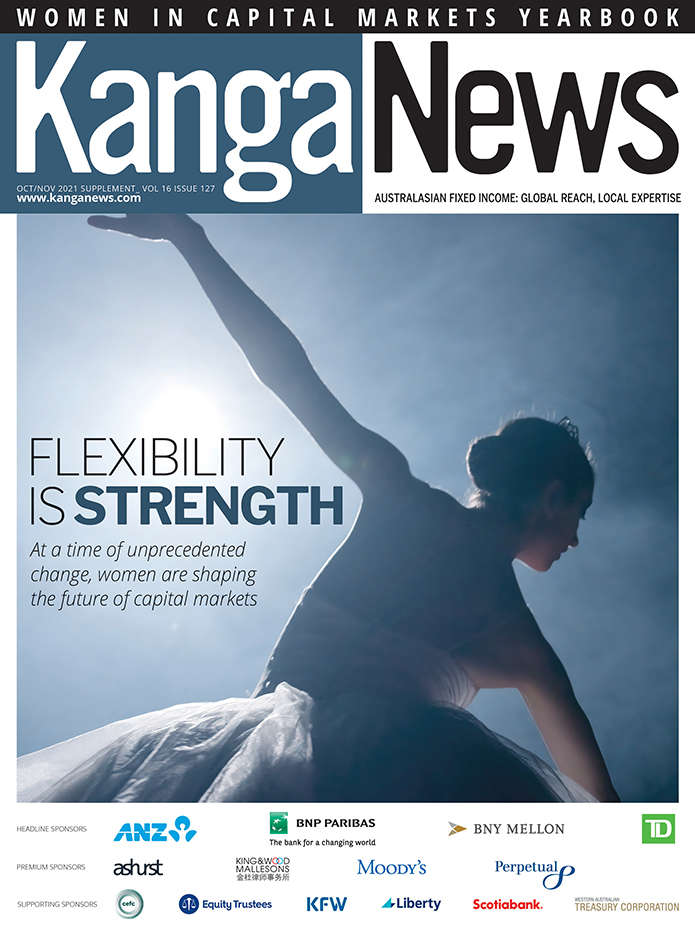
WOMEN IN CAPITAL MARKETS Yearbook 2021
KangaNews's annual yearbook amplifying female voices in the Australian capital market.
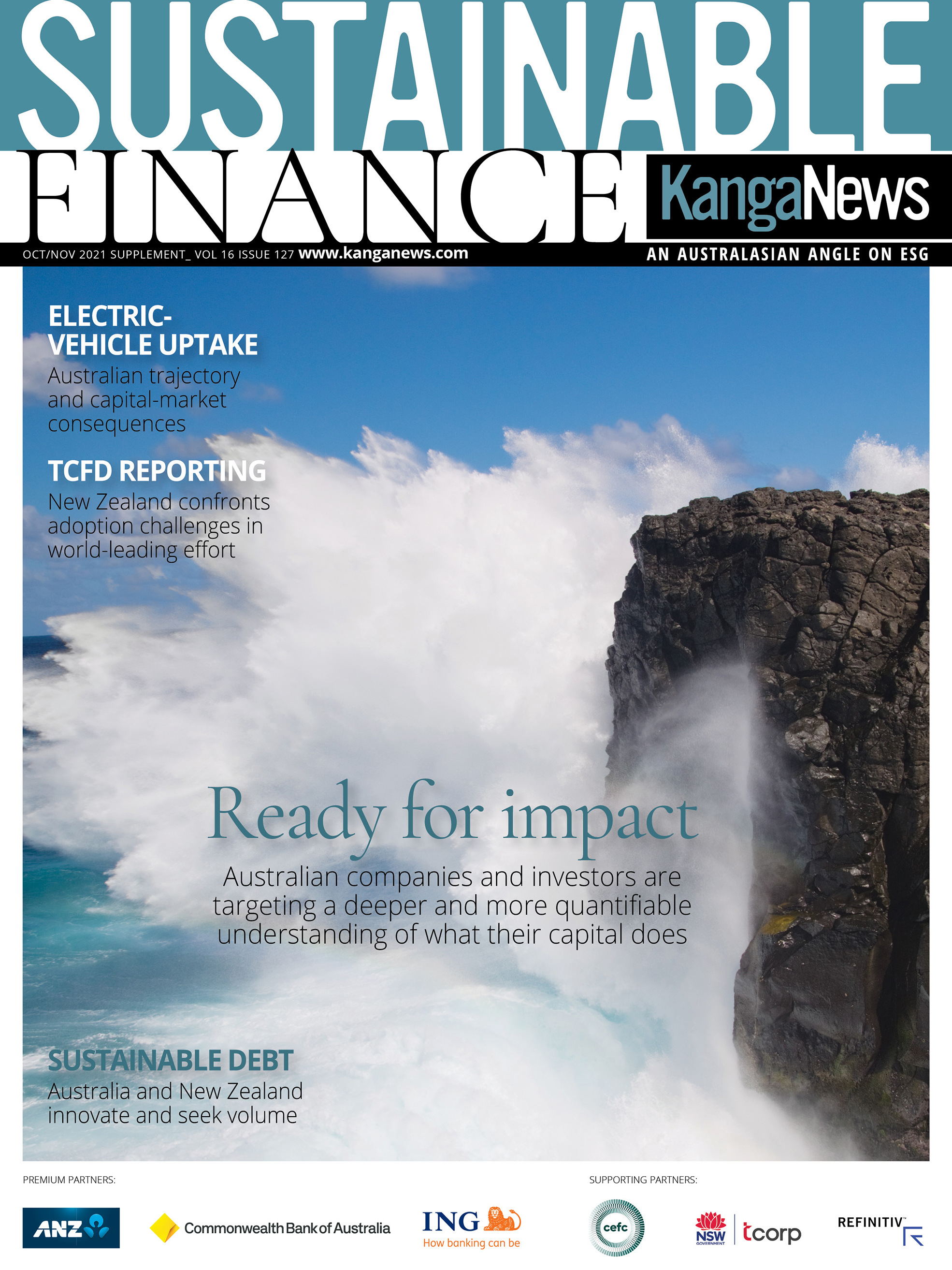
KANGANEWS SUSTAINABLE FINANCE H2 2021
KangaNews is proud to share cutting-edge information from the global and Australasian sustainable debt market.




